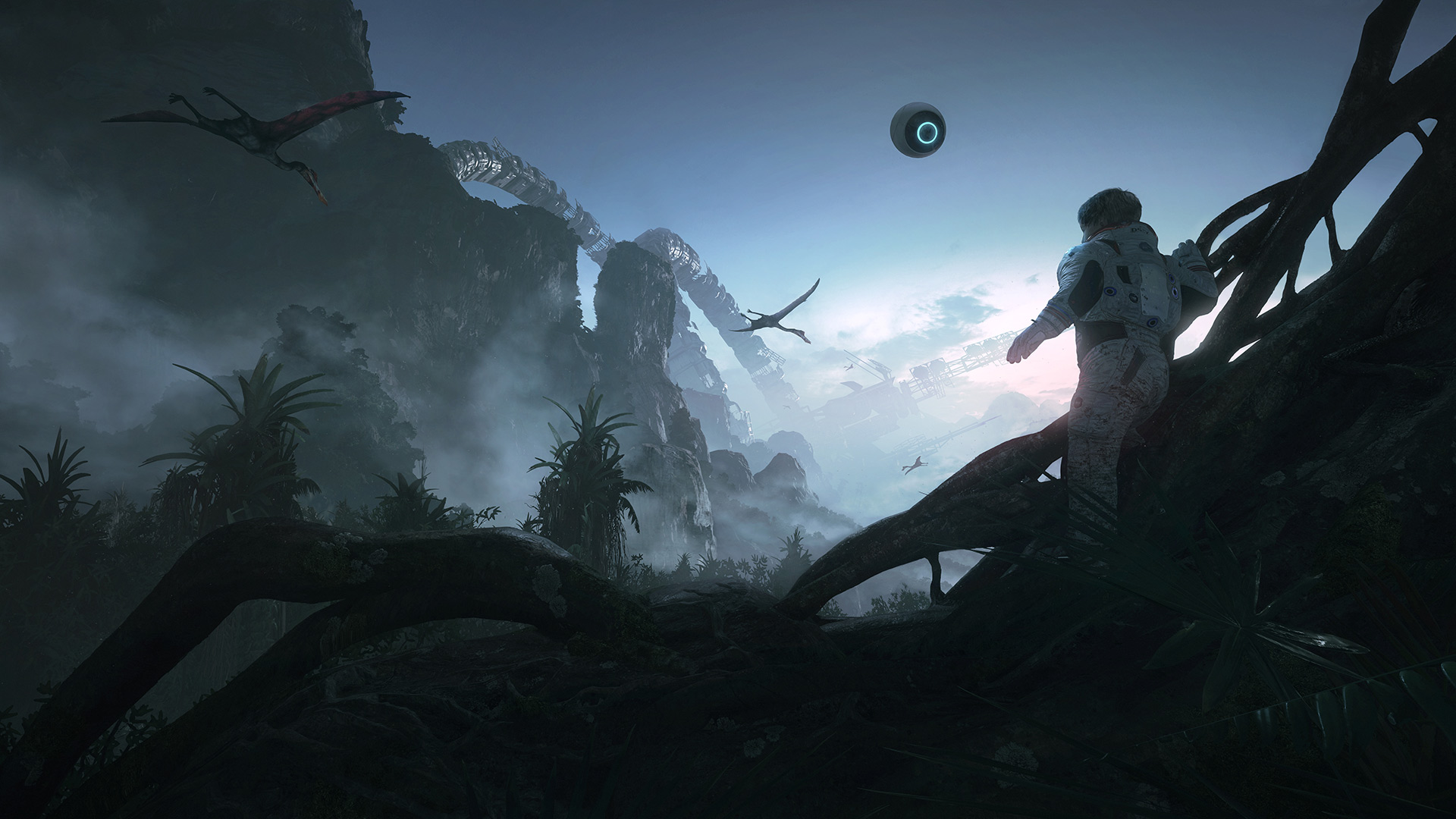
November 01, 2016
By Pascal Eggert, Art Director
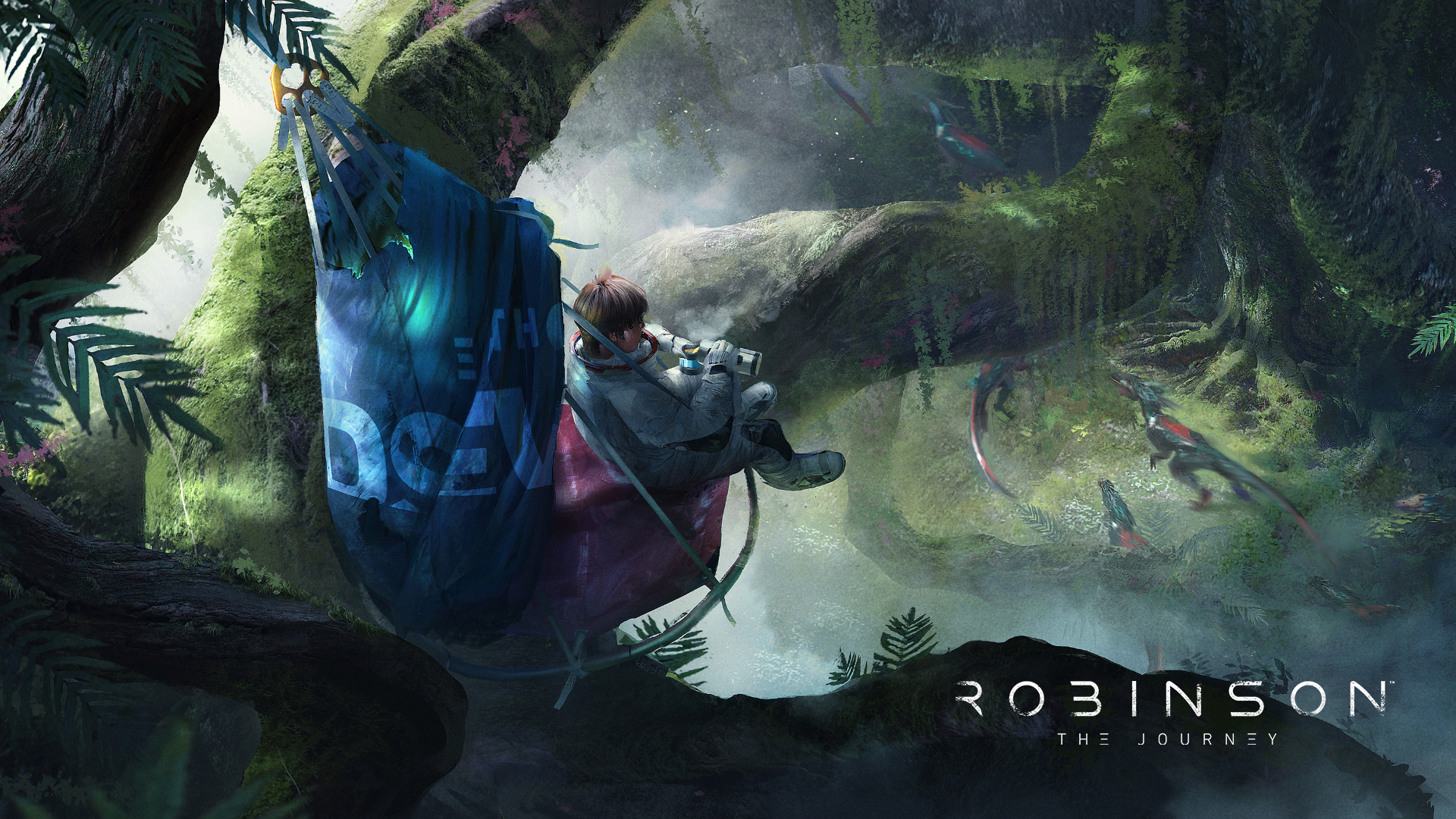
When we got the opportunity to create a completely new fictional universe from scratch we couldn't have been happier. First of all, it meant we didn't have to work with anyone else's concepts, like Midichlorians or talking raptors. Second, and probably most importantly, it meant maximum nerding out.
As you might expect, many people who make games tend to be interested in “nerdy" topics like astronomy, paleontology, or trains. (There wasn't much need for trains in Robinson, but we managed to sneak one in anyway).
So the first thing we did when Robinson went into production was to pretend we didn't know anything about space, dinosaurs, or trains – just so we had a good excuse to do research. And we did a lot of research. We watched every current sci-fi movie out there, read hundreds of articles about the current space programs, as well as visiting places like the Frankfurt Palmengarten (vegetation research) and the Senckenberg Natural History Museum (dinosaur bones!).
After getting that out of our system, it was time to actually sit down and build a universe. The basic outline was the Robinsonade, a genre of stories inspired by Robinson Crusoe and dealing with someone stranded, ideally, by shipwreck on a deserted island. But that wasn't quite interesting enough. So we added dinosaurs. And a train.
Since there aren't any dinosaurs left on Earth we all agreed we'd need to set this adventure in space, where there are lots of dinosaurs*. So all we needed would be a distant planet filled with dinosaurs and a big space ship to crash on it.
* Based on
research of scientific publications like “Nathan Never," “The Land Unknown,"
and “Weird Science"
Shipbuilding
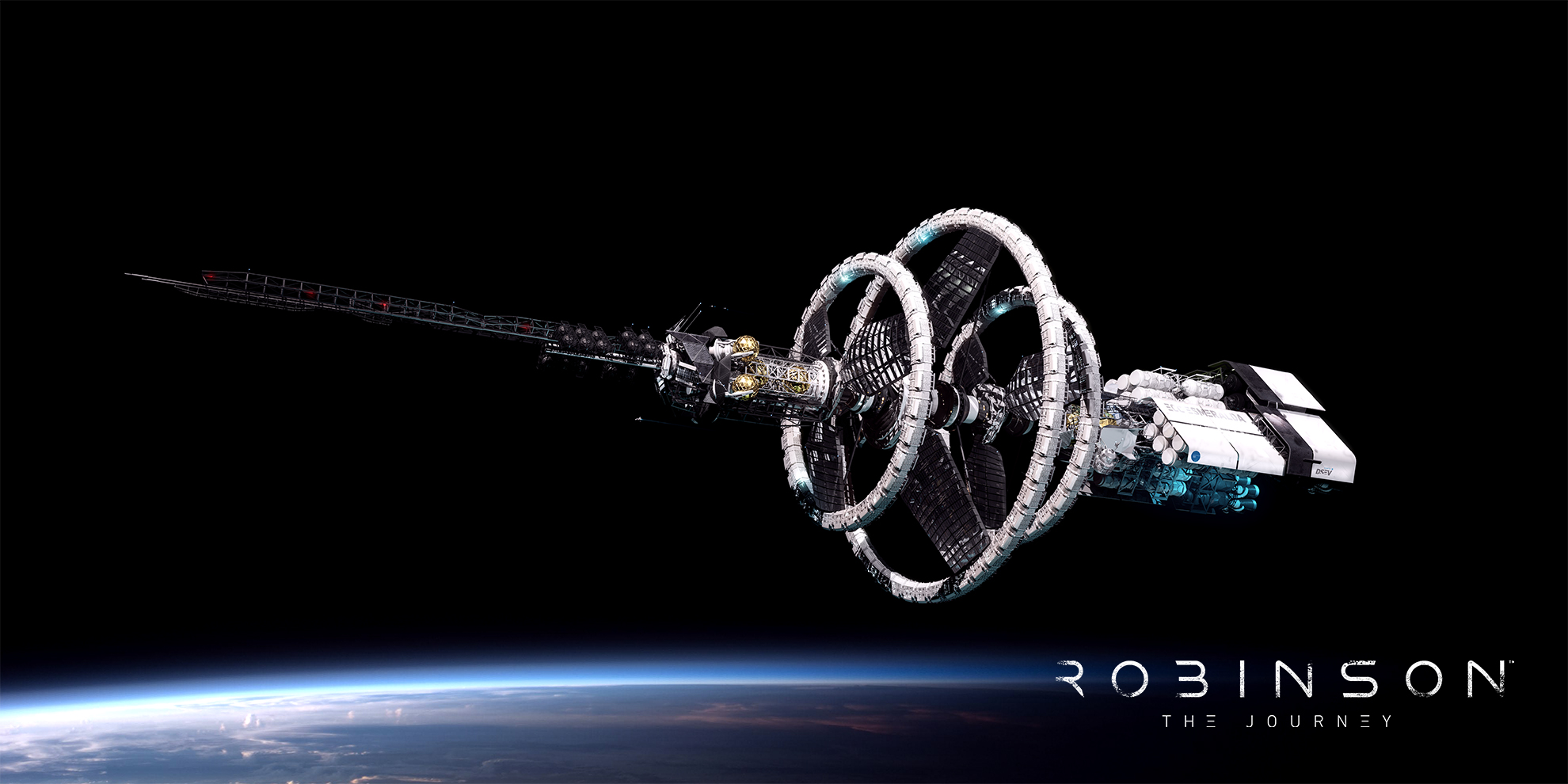
In recent years, hard science fiction books and movies like The Martian and Interstellar have shown that there is a huge audience interested in facts and math in entertainment. (Probably people like us.) So we decided to avoid the easy route of FTL-drives, artificial gravity, time travel, or teleportation and designed a realistic, self-sustaining spaceship that would be able to handle the 100-year journey to Tyson III.
Unfortunately, this of course made Robin's situation a lot more dire because it meant that no other space ship could be coming to rescue him. (Sorry, Robin.) Another important design decision was to not have cryonics or stasis sleep as technologies in our universe, which meant the ship would have to be both bigger and nicer if people were actually going to live on it while in flight. Ultimately this provides Robin with a richer background story and more to discover and use for his survival, like, for example, a BBQ, kettle, or a basketball. You're welcome Robin.
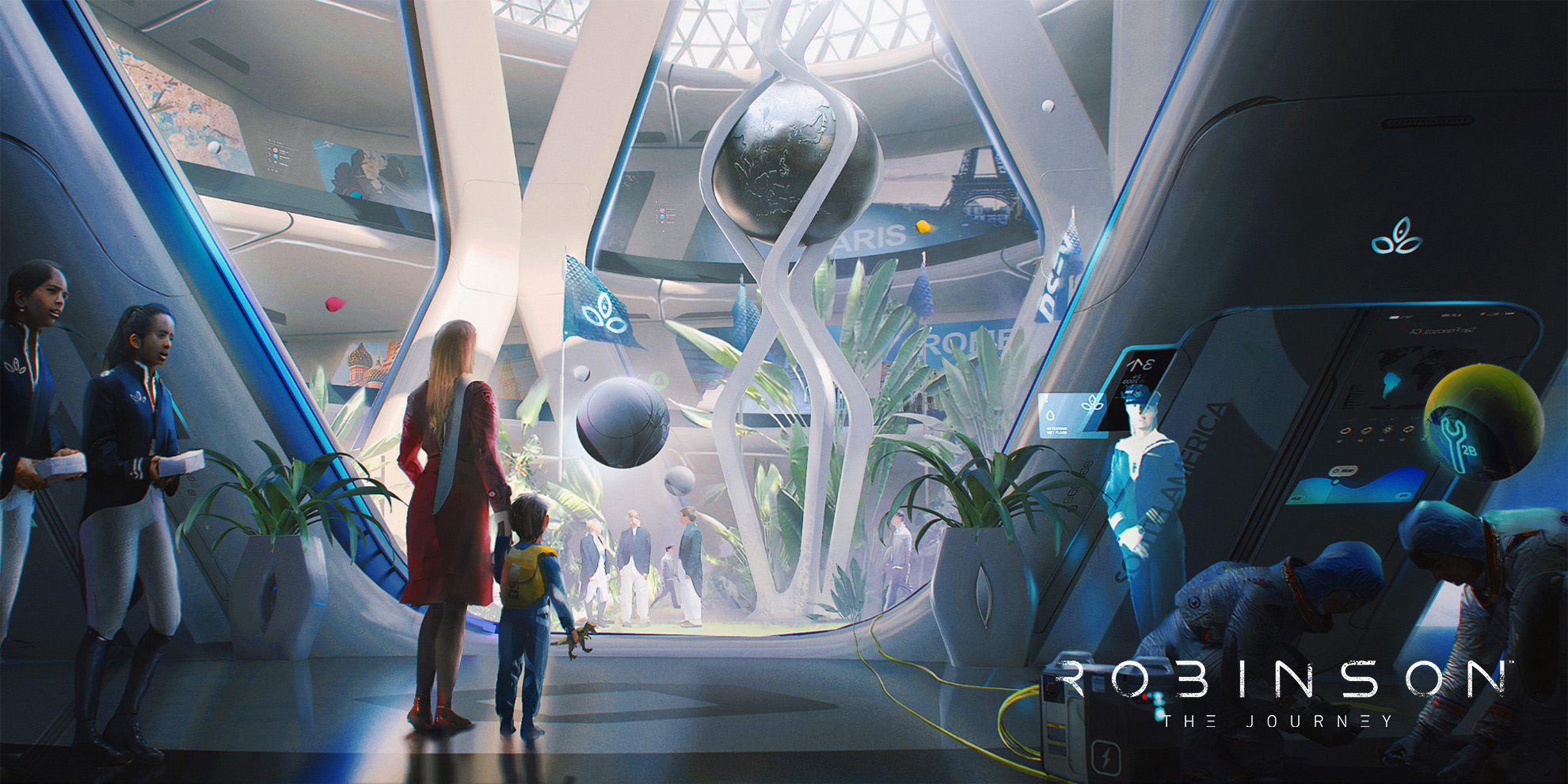
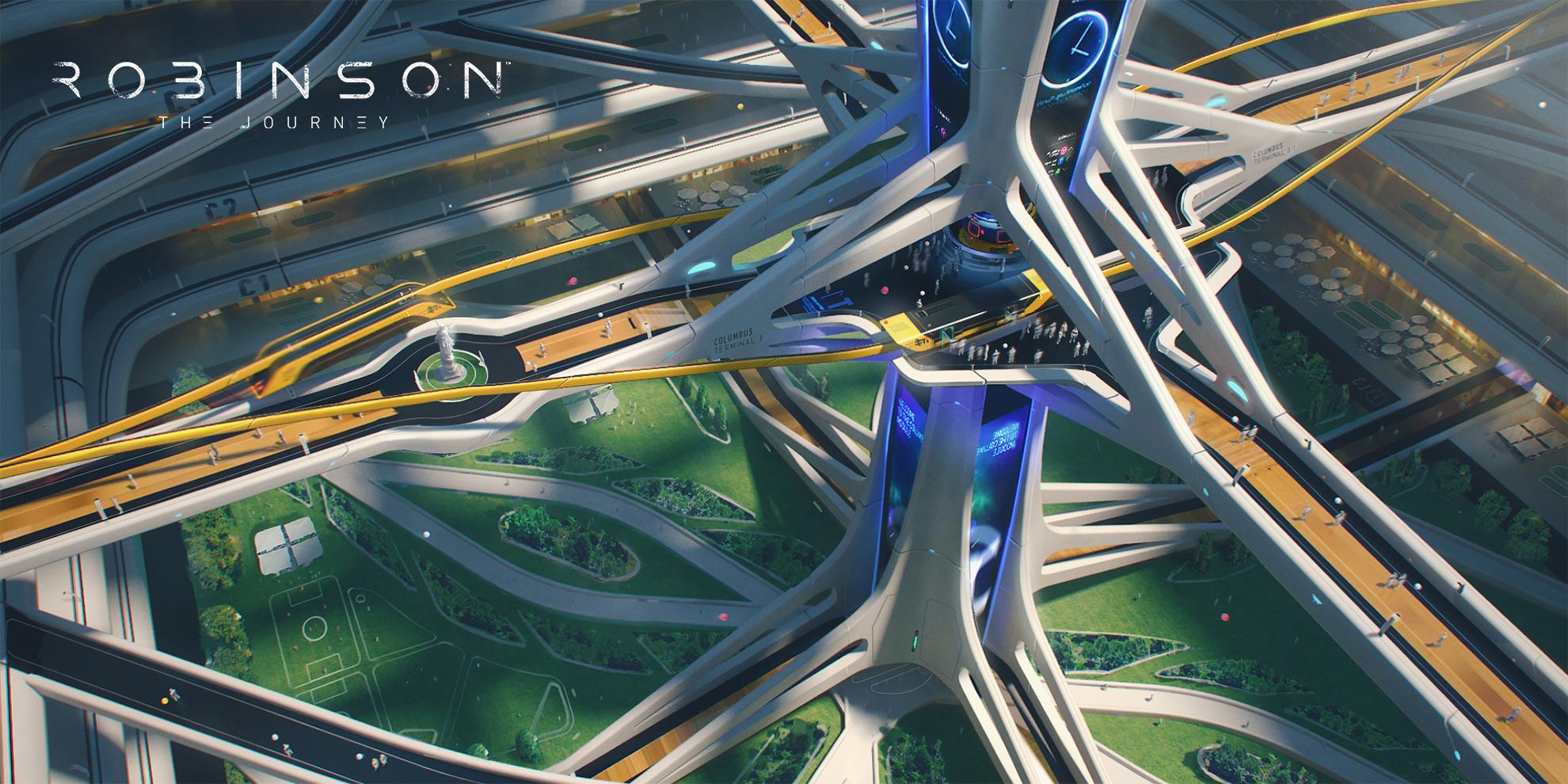
In order to create the debris from the Esmeralda's crash, we
first had to create the ship pre-crash. We wanted a ship that was enormous, but
made up of smaller, transportable pieces that could be assembled while in
orbit. Since we knew the ship would only ever take a one-way trip, it could be
shaped like a rocket with all the engines bundled into one cluster at the end
and a large antenna facing forward. Rocket engines are also very recognizable,
which means they make good debris. The ship also needed big solar panels for
energy generation, storage for all kinds of liquids, and landers to get stuff
up and down from the planet. Most importantly we needed it to be a place where
people lived, so it could be turned into a place players would be able to
explore. There would need to be at least two (or even better: three)
centrifugal habitats big enough for a self-sustaining colony that would spin in
opposing directions to minimize the effect of torque. With our calculations for
size and rotational speed the habitats got so big that, naturally, we needed a
train line to connect apartment and work areas. Which, naturally, needed a
train design, a timetable, and... yeah, that was about when our producers
stepped in and reminded us of our real-world timetable for finishing the game.
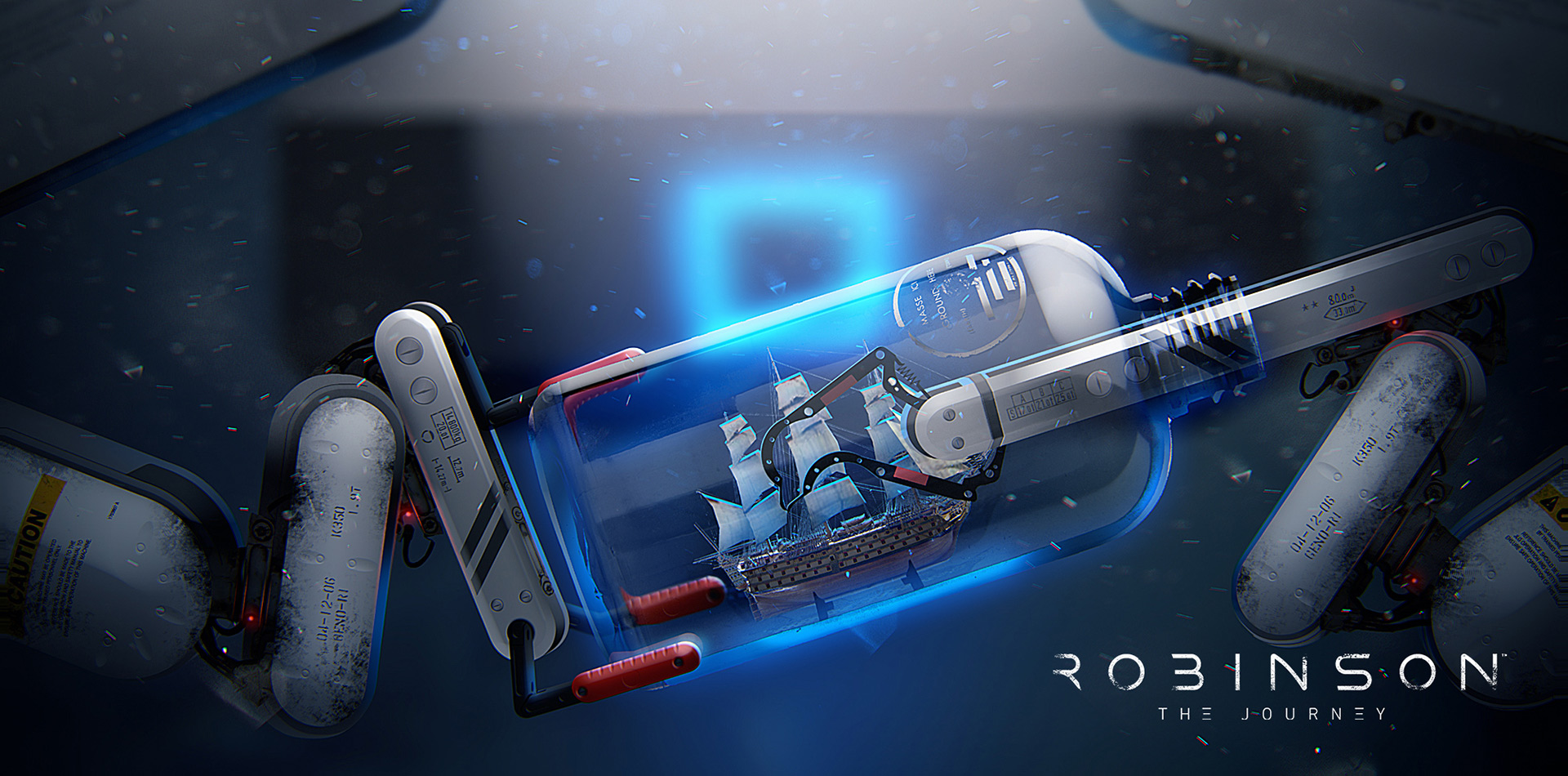
Taking a step back and looking at the design of our ship, we realized we had unconsciously made it look like a large, fragile three-mast sail boat, similar to the one Robinson Crusoe would have been on. So we decided to push that theme even further. We installed even more nautical elements – ropes, round pillars, and plank-like wooden floors – and named the ship Esmeralda as a nod to Robinson Crusoe. But we didn't stop there (you might have heard we're obsessed with details). We carefully calculated a slow fall from orbit that would turn the habitats into iconic, arched, bridge-like structures, similar to the rib cage shape of a wrecked ship.
Researching and thinking through the details isn't just an
essential part of the creative process, but it ultimately helps us deliver
better environmental storytelling which is vital in VR, where presence is
everything. From detailing the smallest objects like toys to thinking through
the history and function of the Esmeralda itself, we want to make our world
feel rich, and credible. And of course, it's fun to throw in a few nods and
winks to the sources we've taken inspiration from too. But it's not about how
an individual object affects you, but the cumulative effect of all those
details becoming part of a world that feels consistent, that captures the
stories and history behind how these objects came to be. We want to create a
sense that this world feels real, that you're really there, when you pull on
the headset. The magic of VR is the power of presence, and we hope that the
work we've done will help give you a truly immersive journey through Tyson III.
